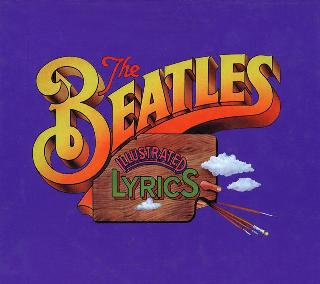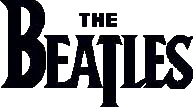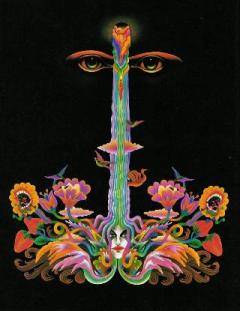Index
Home
Vorige
Don't Let Me Down
Composer(s) : Lennon and McCartney
Year : 1968
Chords/Tabs: Don't Let Me Down
Notes on "Don't Let Me Down" (DLMD)
KEY E Major
METER 4/4
FORM Intro -> Refrain -> Verse -> Refrain ->
Alternate Verse -> Refrain ->
Verse -> Refrain -> Outro (w/complete ending)
GENERAL POINTS OF INTEREST
Style and Form
- Here we've got a slow, hard-driving screamer that has John's musical
fingerprints all over it:
- Formal twists -- It's strictly symmetrical, with a unique "Alternate
Verse" section smack in the center keystone position, and the instrumental
break is pushed back to the Outro.
- Slow triplets used for rhetorical emphasis -- While Buddy Holly would
save these until near the end of the song for climactic effect (see
"That'll Be The Day,) watch how this song shoots the wad right at the
get go. It's a not so subtle signal that what's coming is going to be
intense.
- Uneven phrasing -- The anacrusis leading into each phrase of the verse
is extended by one, free-verse-like, extra beat; one line of pentameter
in an otherwise four-square milieu.
- Pentatonic tune -- The 7th scale degree is completely avoided in both
diatonic leading tone form and its chromatically flattened mutation.
The 4th scale degree shows up only in the backing vocal as it follows
the tune in parallel thirds.
- Harmonic frugality -- Just three chords explicitly (I, ii, V) plus
the strong hint of IV; no more.
- Deceptively complex message in the lyrics -- The verses deliver
a cleverly worded yet unambiguous encomium about love's latest object
in the 3rd person. The refrains, in rather unsettling contrast, transmit
a primal scream for insurance on direct address to the same love's
"object." In hindsight, even the words of praise seem a tad selfcentered
around the edges in the sense of, what's the protagonist done
for *her* lately?
Melody and Harmony
- Pentatonic here means E-F#-G#-B-C#. No D or D#, and A shows up
very sparingly.
- The melodic shape of the Refrain is drivingly downward. The Verse
ends with a similar gesture, in spite of its starting off with a
strong suggestion that a broad, upward melodic arch is in the offing.
The Alternate Verse breaks the mold but not only by providing an
unhampered complete arch, but also spreading it out over the course
of its two phrase. The Refrain and Verse each featured an internal
form of AA.
- The tune runs roughshod over the chords, adding a 7th to ii, and
often adding some combination of 7, 9, 11, and/or 13 to V. The latter
effect makes it sound almost as if IV had been superimposed on V;
i.e. think of B in the bass with A, C#, and E in the treble.
- The Verse and Refrain section share the harmonic trait of starting
off as if "on edge;" decidely away from the I chord but converging
harmonic shape, both starting and ending with I. The Beatles clearly
were sensitive to analogous situations in other songs of their acquaintance.
In one Twickenham bootleg, a jam session that starts off with
"Sun King"
transitions later into this song. Similarly, a later runthrough of this
song causes them by free association to talk about and then attempt
to stumblingly reprise a bit of
"Devil in Her Heart."
Again, the Alternate Verse is given to break the mold by both starting
and ending on I.
- The IV chord appears sort of in the mist in a number of places in
the song, though you'd be hard pressed to catch them playing it clearly,
and explicitly. Often when you think you're hearing IV, it's more
likely that funky V7/9/11 trick. Though I could swear the close of
every refrain sounds damn like a plagal cadence with IV executed in
the second inversion.
Arrangement
- Just like with its "Get Back"
flip side, the arrangement of this song
is in the live, impromptu style. John's short stretch of double tracked
lead vocal in the Alternate Verse is perhaps the only dead giveaway that
this track was retouched in the studio.
- The lead vocal range runs over an octave and a half, forcing John out of
his comfort zone and encouraging yelping, chatty byplay with Paul of the
sort for which he (Paul) usually needed very little encouragement to get
going.
- The counterpoint melody played in octaves during the Alternate Verse
by the bass and lead guitars is one of the more novel, unusual instrumental
touches you'll find anywhere in the Beatles catalogue.
- The vocal arrangement here is a bit less neat than usual. The Refrains
are done with some consistency, but not so for the verses. In the first
Verse, John starts off solo with Paul joining him for the second phrase;
in the final verse John sings solo all the way through. I wonder if
this is a matter of them taking less care here than usual, or if, in
a kind of reverse backlash, they went out of there way to make sure this
would be less neat.
SECTION-BY-SECTION WALKTHROUGH
Intro
- The intro is two measures long and turns out to be taken from the
final two measures of the Verse section. The slow triplets that
declaim the title phrase start in the second half of the second
measure.
|E (A?) |- |
E: I (IV?) I
- The second half of the first measure here is a perfect example
of what I call the "phantom" IV chord.
Refrain
- The refrain is 8 measures long with an AA phrase pattern:
------------------------------ 2X -------------------------------
|f# |- B |E |- |
E: ii V I (IV?)
Verse
- The Verse is also 8 measures long with an AA phrase pattern. The measure
that precedes each verse phrase is extended an extra beat.
------------------------------ 2X -------------------------------
|f# |- B |E |- |
ii V I
- Harmonically, the one subtle difference between Refrain and Verse is
the switch to the V chord in the second measure on the 4th beat rather
than the 3rd.
Alternate Verse
- This section is 8 measures long, and is the only section that's not
in an AA phrase pattern:
|E |- |B |- |
I V
|B |- |E |- |
V I (IV?)
Outro
- The outro provides one last complete refrain, primarily for Billy
Preston's electic piano solo, but with more than ample amounts of
vocal horsing around from John and Paul added in for good measure.
SOME FINAL THOUGHTS
- In terms of style, underlying attitude, and the widely scattered
number of alternate versions unofficially available of it, "Don't Let Me
Down" is arguably about as archtypal and emblematic of the
Get Back/
Let It Be
Era as either of one the latter's alternating "title" tracks.
- Nevertheless, DLMD curiously failed to make the cut for the _Let It
Be_ album. It appears in official release only as a lowly single B-side,
taken no less, from a take that sounds peculiarly muddy, and IMHO is
not necessarily the best take that was available to them. For my
money, the 1/22 version that was slated for the _Get Back_ is superior
to the official 1/28 performance in terms of both musical execution
and extremely interesting studio chat; e.g. "give me the courage to
come screaming in," and "hit it, Bill!"
- It remains another one of those songs whose collective set of alternate
versions transcends the value and appeal of any one particular runthrough.
Once you've got the bunch of them downloaded in your head, the single
version is no longer necessarily your favorite, nor does it earn even
your mental imprimatur as particularly "official." (You might say the
latter applies to no small number of the songs from these sessions if
you're any kind of Get Back bootleg fiend.)
- Perhaps the apparently offhanded treatment of this song in official
release combined with the sheer variety of alternates available suggests
that the Beatles themselves weren't sure exactly how they wanted to nail
it down and just decided to let it (uh ..) be.
Regards,
Alan (awp@world.std.com)
---
"She'll only reject me in the end, and I'll be frustrated." 030799#162
---
Copyright (c) 1999 by Alan W. Pollack
All Rights Reserved
This article may be reproduced, retransmitted, redistributed and
otherwise propagated at will, provided that this notice remains
intact and in place.
Ook op Past Masters, Vols. 2:
Ook op Let It Be... Naked:
Ook op 1967-1970:
(c) 2024 Serge Girard


 (c) Alan Aldrigde, The Beatles Illustrated Lyrics
(c) Alan Aldrigde, The Beatles Illustrated Lyrics